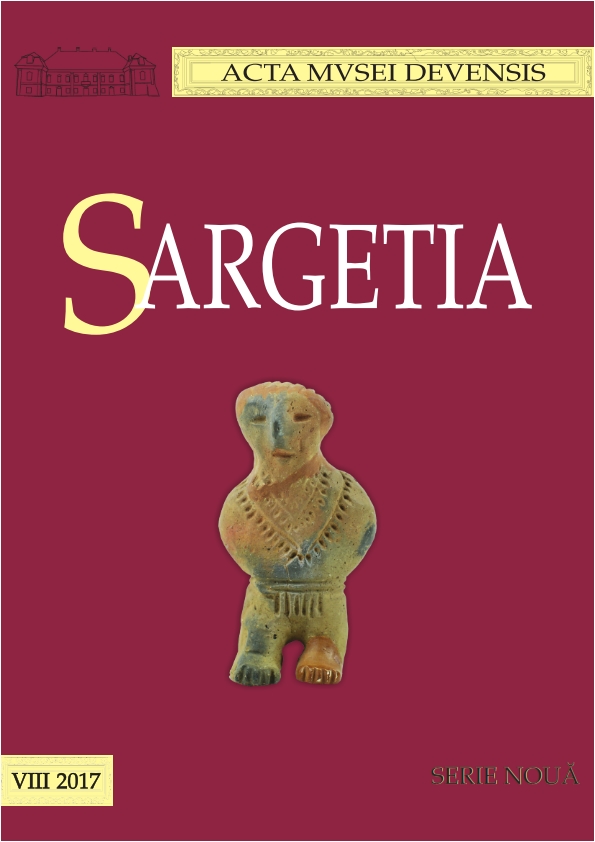O locuire medieval timpurie pe valea Mureşului mijlociu. Tărtăria – Situl 9
Early Medieval Habitation on the Middle Mureş Valley. Tărtăria – Site 9
Author(s): Bogdan Alin Craiovan, Octavian-Cristian Rogozea, Dorel Micle, Remus Constantin Dumitru DincăSubject(s): History, Archaeology
Published by: Editura Altip
Keywords: Early Middle Ages; medieval pottery; dwellings; hearths; Tărtăria
Summary/Abstract: The aim of the present study is that of introducing new information into the scientific circuit, regarding the Early Medieval habitation on the Mureş Valley. These pieces of information are the results of the preventive excavation that took place during the late autumn of 2014, near the village of Tărtăria, Alba County. During the above mentioned period of time, the Braşov – Simeria railway line was rehabilitated, and as a result one of the sectors ended up affecting one of the many archaeological sites located in the boundaries of the Tărtăria village. The site concerned, conventionally named Site 9, was archaeologically investigated by a team composed of archaeologists from Museum of Dacian and Roman Civilization, Deva, and West University of Timişoara. Following these investigations, the team discovered an impressive number of archaeological features, some of them dating all the way back to the Neolithic or Eneolithic periods, while others belonged to the Middle Ages, the latter being the object of this paper.The settlement is situated on a natural terrace that oversees a meadow near the Mureş River. The base of this terrace is streaked with water streams that were probably an excellent source of running water. The meadow could have been used as grazing pastures, as it is used even to this day. This position offered the settlement’s inhabitants a great strategic advantage, which was probably one of the main reasons of choosing this area (Pl. I/1-2).The medieval features described in this study consist of several household structures and annexes, of which one is some form of a fire-making installation (Fig. 1), probably an open hearth or similar (complex 1). Two interesting features that also deserve to be mentioned are complex 52, which is most likely a variation of a domestic hearth and the service pit that was connected to it, complex 97 (Fig. 2). Another interesting situation is represented by what is presumably a rectangular shaped dwelling (Fig. 3), discovered in close proximity to complex 57, which may suggest a relation between the two, hypothesis strengthened by the lack of hearth inside the dwelling itself. The archaeological material recovered from the excavated complexes consists mainly of pottery. The discovered pottery can be included in the group of common ware, one can distinguish fragments that belonged to clay cauldrons (Pl. III/5-6, IV/1-2, 7, V/1-2, 9) and pots (Pl. III/1-4, IV/3-6, 8, V/3-9). The latter are decorated with incised parallel lines, incised wavy lines, and nail, spatula or toothed wheel impressions. The only other artefact discovered, besides pottery, is a coin (Pl. III/7) that was issued during the reign of king Bèla III (1172-1196). The coin itself is a copy after an almoravid dinar that was issued by arab caliphs that ruled parts of Spain during the tenth and eleventh centuries. Elements of Kufic writing were used as a decoration method, but the words are not correctly arranged, as in the case of a logical sentence, the functionality of these Kufic letters and words is strictly decorative.Considering the similar dwellings and hearths discovered in the neighbouring site (Site 10), as well as the uniformity of the pottery collected from both sites, we strongly believe that we are dealing with one settlement, spread across the two terraces. Unfortunately we cannot offer a satisfying answer regarding the scattered pattern of the dwellings and hearths, a probable cause may be represented by the fact that we were only able to investigate a small part of the terrace, the rest of it was either affected by the railroad or was outside of the research perimeter. Based on the characteristics of the analyzed pottery, we consider that the settlement can be dated back to the 12th century.
Journal: Sargetia. Acta Musei Devensis
- Issue Year: 2017
- Issue No: 8
- Page Range: 213-228
- Page Count: 16
- Language: Romanian

